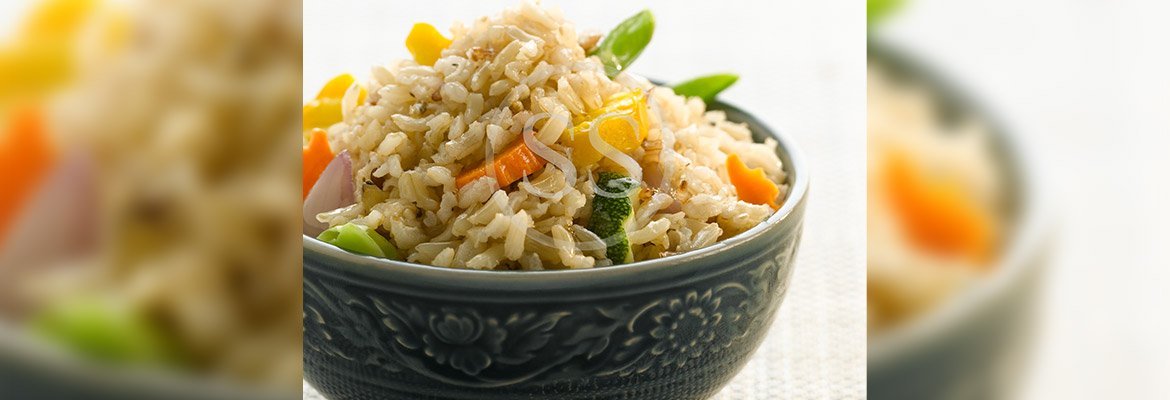06
2019
GOING WITH THE GRAIN – MYTHS, MISCONCEPTIONS BUSTED

Going with the GRAIN – Myths, misconceptions busted
For thousands of years, all civilizations cultivated grains from common grasses which contain nutrients essential for human development, vitality, and prevention of disease. Whole grains contain the genetic memory of how humanity rose from the dark recesses of primitivism to become civilized species we once were during that lost piece of history called ‘the golden age’ by our ancestors worldwide. Energetically, whole grains finely tune the human nervous system in such a way as to affect every part of the body, to the extent of unifying it with the souls as one whole functioning organism. This was the legacy given to us by our ancestors. When whole grains are complemented with good quality and variety of unrefined plant foods, all elements of nutrition necessary for human development are available.
The macrobiotic view, embraces grains as the mainstay of its approach; which becomes the foundation of building a sound diet plan known to reverse ailments, fill in the gaps with missing nutrients, and control cravings due to sustained whole grain sugars; by first restoring the health of your gut, namely fixing your digestion. It’s the same as any Ayurvedic diet would first do. Whole grains have the capacity to reproduce in abundance from a single seed and when eaten by human beings can be supportive energetically to reproductive strength—not just sexually, but also psychologically. If prepared well whole grains provide energy, endurance, satisfy hunger, calm nerves, encourage deep sleep, promote elimination quickly, aid in quick reflexes, long-term memory, and promote clear thinking. In my experience, I can’t write so much content which I create daily with my book, social media or for you; if my whole grain is missing.
For us Indians whole grains are referred to as the ‘Staff of life.’ They contain the most highly developed seeds of food plants. Their embryological roots, stems and leaves reveal the same pattern of nodes that exist in the fully mature plant—an embryological process that closely resembles the developmental processes of the human fetus (Steve Gagne). On a physical front, they are rich in minerals, vitamins, phytochemicals; the best of all your food groups because of their complete nutritional profile. Of course, each one provides a little more of something or the other in terms of the micronutrients. But the one thing they all have in common is that they support blood sugar levels, fiber, and are antioxidant-rich, anti-cancer, anti-obesity, anti-cholesterol/hypertension, anti-inflammatory, anti-microbial and except for barley (jov) and some questions on oats, they are all gluten-free.
So, what happened? Why did we start avoiding our whole grains? In the quest for weight loss diets that stress on avoiding carbohydrate and focus on protein and lots of fat they have at least one theory that they put forth: carbohydrates from grains, including whole wheat can promote weight gain. This is a false notion. Many books and research that stress on avoiding grain carbohydrates neglect to tell us, however, that excessive weight gain will generally not occur from eating unrefined whole grain, but hybrid forms of wheat and refined grains (maida); from where all your breads, pastas, bread, biscuits are largely made. These products made from refined wheat flour namely maida and are really responsible for elevating blood sugar levels, since glucose is accompanied by insulin, the hormone that allows for glucose to enter the cells of the body, converting glucose to fat. The higher the consumption of glucose after consuming a food, the greater the insulin response, the more the fat is deposited, particularly abdominal for deep visceral fat. The more the chance of you getting diabetes and insulin sensitivity. On reason that millets have started coming out of Indian closets, is because of their ability to be gluten-free, and making an excellent option for diabetics who can experience insulin spikes with white rice and whole wheat (hybrid) consumption.
Why all the elaborate processing of wheat? Because wheat has a highly developed, independent and tough character. It makes for terrific raw material for creating new material. Grinding it into a flour, then stripping it and adding bleach; all make it a more usable material for mass marketing of a baked product.
These are the whole grains available in the Indian markets: brown rice and versions of it like red rice/black rice; oats (whole and steel cut); all the following come under the umbrella of millets: sorghum (jovar), foxtail, kodo, proso, barnyard, barley (jov), finger (ragi or nachni), pearl (bajra); (and many others specially in the South of India that have their own unique names). As I’ve explained they all impact *blood sugars positively. So, on that front all of them have this commonality. But often there is a confusion on how and when to consume them; and I am seeking to clear this up for you. I have split them over the following five variables 1. Seasonality (most whole grains are produced all-year round in India, so while they can be eaten all-year round, its their digestibility and your gut that determines whether you should actually consume it given the season 2. Digestibility/impact on your gut 4. Portions to eat 4. Time to eat them 5. Formats of cooking that are best for them (given Indian cooking).
*For diabetics all whole grains, are counted as a part of their carbohydrate load for the day; but they are all complex carbohydrates that will give a steady rise to blood sugars, and not cause spike if eaten in moderation.
DO read the second half of this blog up next….
(Line of approaching whole grain from Paul Pitchford)
